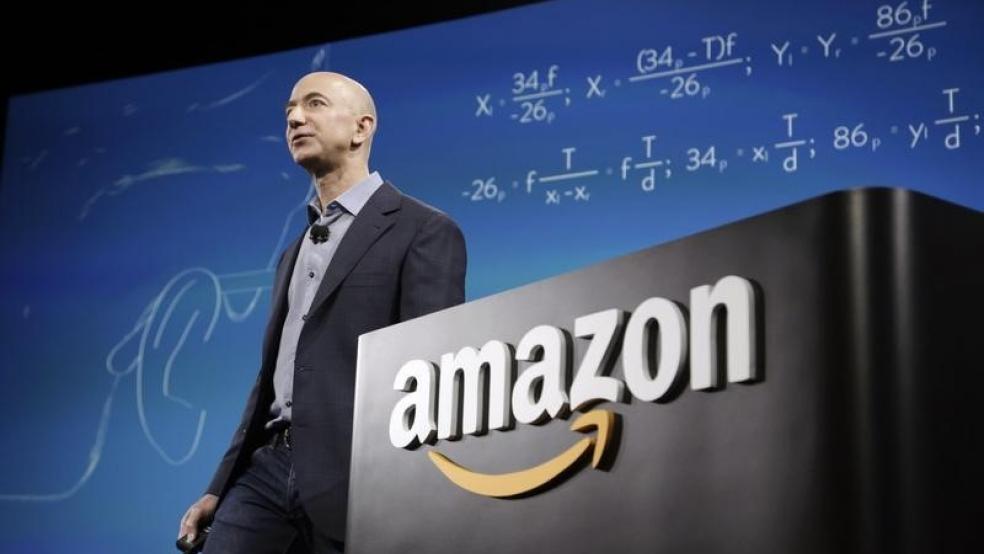Last week, when Sandeep Mathrani, CEO of Chicago-based General Growth Properties (GGP), said that online retail giant Amazon plans to open 300 to 400 physical bookstores, he let loose a flurry of speculation. Is the company that built its fortunes on the Internet while threatening the brick-and-mortar store model recasting its business strategy? Or does Amazon have something more exciting and experimental up its sleeve? A day after Mathrani’s comments, GGP clarified that his statements were “not intended to represent Amazon’s plans,” while Amazon declined to comment on “rumors and speculation.”
Nonetheless, the ensuing debate on Amazon’s future has centered on how the e-commerce giant could use technology and data analytics to create a new experiment with brick-and-mortar stores. Wharton management professor Daniel Raff said it was “clear from industry gossip that [Amazon is] contemplating a rollout of stores” and that there were “hints at clever new technology in these stores.” However, “the bigger question is: Why they are thinking of [doing] it?”
Related: Why Amazon Prime Is Such a Great Deal – for Amazon
According to Amanda Nicholson, professor of retail practice at Syracuse University’s Whitman School of Management, Amazon may be “trying to redesign a new kind of store and move into brick-and-mortar, utilizing its own technological and data brilliance.” She noted that Amazon has an “extraordinary supply chain” and that it has “built [its] name on how to get stuff to us very inexpensively and very quickly.”
Raff and Nicholson discussed Amazon’s possible expansion into the brick-and-mortar retailing world on the Knowledge@Wharton show on Wharton Business Radio on SiriusXM channel 111.
Mathrani’s comments that kicked off the speculation about Amazon’s strategy were unambiguous. “You’ve got Amazon opening brick-and-mortar bookstores, and their goal is to open, as I understand, 300 to 400,” he had said in GGP’s earnings call on February 2, in response to an analyst’s question about mall traffic, The Wall Street Journal reported. Before GGP clarified Mathrani’s comments the following day, the share price of Amazon rival Barnes & Noble fell 9 percent.
Raff pointed to Amazon’s lone physical book store in Seattle to glean some insights into the company’s thinking. He noted that the store occupies a tenth of the floor area of a former Barnes & Noble store at that location, and has a “highly curated” selection of books that seem to cater to “local interests” such as those of campus walk-ins from the nearby University of Washington and suburban residents. “All books are displayed face-out unlike in other bookstores, and most significantly, they are sold at online prices,” he said. “Everything appears to be at a discount relative to what it would be at an ordinary bookstore.” The store also sells Amazon’s Kindle e-reader and its Fire Phone, he noted.
Related: Amazon plans to open up to 400 bookstores, says mall operator
Raff drew two insights from that model. “One, it doesn’t seem to be [about] just books, but also participation in the Amazon ecosystem,” he said. “The other is, they are in a position to stock and promote these stores quite inexpensively. That is a competitive edge relative to new brick-and-mortar stores.”
Raff and Nicholson also noted that Amazon has filed several patent applications on its new material handling facilities and other innovations. One of those innovations “involves recognizing who their customers are and their payment information while they are at the shelves and contemplating products, and allowing a cashier-less checkout,” Raff said. If Amazon were to achieve all that, it could cut down significantly on its overhead and become more competitive in the brick-and-mortar market, added Nicholson.
Cost Savings, More Sales
Nicholson noted that Amazon is not trying to replicate a Barnes & Noble but attempting to do something different. Expanding on Raff’s observation about the highly curated collection at Amazon’s Seattle store, she said that space represents “a test” to see if Amazon can create “a new kind of experience” using data analytics about customers’ preferences.
Related: Amazon renews credit card deal with JPMorgan
However, “were [Amazon] able to give a coup de grace to Barnes & Noble, which has been appearing troubled in recent months,” that would certainly benefit Amazon because there would be less pressure on pricing, Raff noted. Also, by adding brick-and-mortar “depots,” Amazon could realize savings in its profit-draining cost structure of shipping to individual customers, he added. If Amazon could send large shipments to locations where customers could pick up their orders, the firm would be “ahead of the game in terms of shipping costs,” he said. The company could also convert customer visits into sales of other merchandise.
Nicholson pointed out that online retail sales are still small at about 9% of all retail sales and that they could reach 12% by 2020. “There is still reason for people to go out and look at things and touch things,” she said. “Online has not single-handedly destroyed people’s need [to do so].”
For the time being, Raff characterized any talk about an Amazon brick-and-mortar strategy as “highly contingent speculation.” Even if Amazon had such plans for physical stores, it would take a long time for them to be rolled out, he noted. Identifying the right locations, negotiating leases, fitting out the physical spaces, hiring and training staff and so on to open 400 stores in a short period of time would call for planning like that for “a D-Day invasion,” he said.
In the week leading up to the speculation about its future strategies, Amazon appeared to be in strong form. In its results announced on January 28, it posted 20% net sales growth for 2015 at $107 billion and net income of $596 million, reversing its net loss of $241 million in 2014.
This article originally appeared on Knowledge@Wharton. Read more from Knowledge@Wharton:
The Two-minute Power Pose That Can Boost Your Performance

